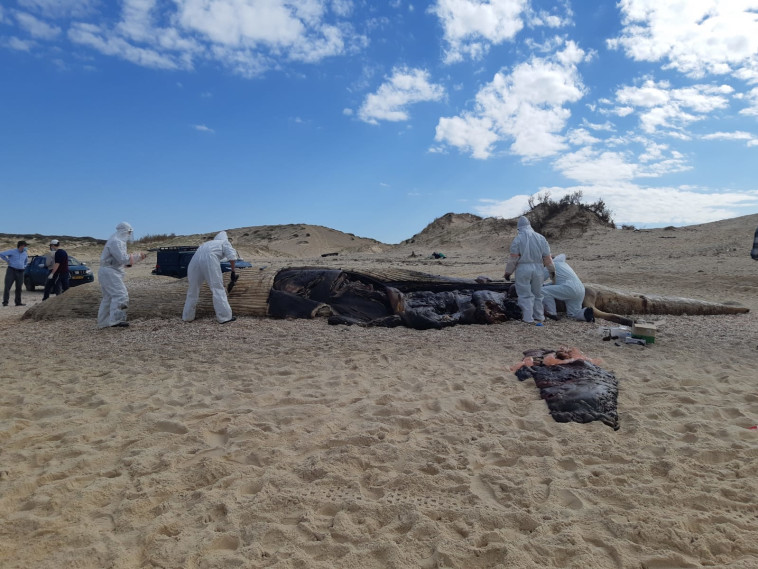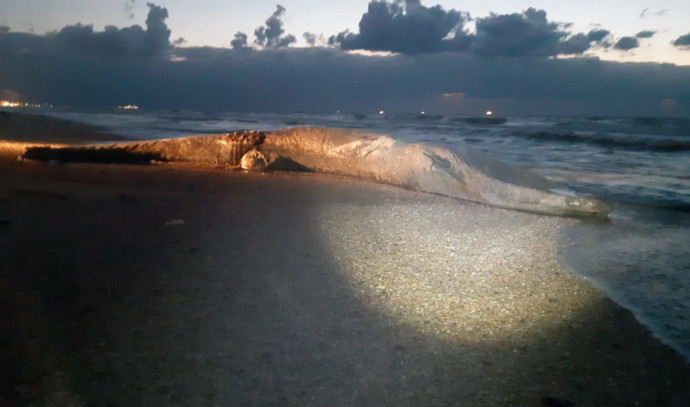The Nature and Parks Authority said today (Sunday) that the body of the whale that was ejected onto Nitzanim Beach last week contained substances related to oil pollution in the Mediterranean. Dr. Roni King, a veterinarian for the Nature and Parks Authority, together with a team from the Veterinary Institute in Beit Dagan, operated on the whale’s body this morning. The materials found during the autopsy were taken for further examination.
On Thursday, Dr. Aviad Sheinin of the Morris Kahn Marine Research Station and the Delphis Association said that in the afternoon, a whale arrived off the coast of Nitzanim. It is the second largest animal to ever live on Earth. Adults can reach 24 meters. It is not clear why he died, he is less than a year old. “
Dr. Ronnie King of the Nature and Parks Authority. Credit: Nature and Parks Authority
Against the background of the stormy weather that took place last weekend, huge amounts of oil and tar reached all of Israel’s shores, from pests to Rosh Hanikra. Senior officials from the Nature and Parks Authority addressed the phenomenon, calling it “the most serious ecological disaster we have ever known.” The Minister of Environmental Protection, Gila Gamliel, also referred to the incident last Friday and announced that she would work to find those responsible for the serious failure.
 Autopsy of the whale’s body ejected ashore (Photo: Nature and Parks Authority)
Autopsy of the whale’s body ejected ashore (Photo: Nature and Parks Authority)- 2021 Elections: All the polls, articles and interpretations of leading reporters on the Maariv website
Over the weekend, thousands of volunteers came to the country’s shores in order to help clean up the beaches. As a result of the spread of the toxic substances, many animals were harmed, including sea turtles, fish, poultry and many other species.
